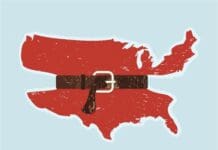Weekly jobless claims in the United States fall for the second week in a row after increasing for the past three weeks. According to the Labor Department, claims fell by 23,000 to hit 261,000 the week that ended on January 22nd. This brings the total to 1.6 million Americans collecting unemployment aid this week.
This new data comes as economists begin to forecast exactly where the labor market is headed in 2022. 2021 was a bit of a volatile year for the labor market as a whole, as the COVID-19 pandemic left many workers in different positions throughout the year. 2021 started bleak as the pandemic rampaged on, with a record number of employees being laid off and collecting weekly unemployment benefits as a result.
However, the widespread supply of vaccines began to change this outlook, completely changing the labor market in the United States almost overnight in the spring and summer of 2021. Once vaccines became more readily available, consumer demand for goods and services skyrocketed — and employers desperately needed to hire back all the employees they had previously laid off.
This resulted in a labor shortage, one that still hasn’t been resolved as economists would have liked. Throughout the rest of 2021, economists kept anticipating that more workers would finally return to the workforce. However, this mass hiring wave never completely appeared. Instead, workers slowly returned to the workforce with each new month, some months rather slow when compared to others. December, for example, was a dismal month for new hires, which surprised economists, as they anticipated hiring to continue to rise.
As a result, it does appear as if economists believe that hiring will continue to increase in 2022, though rather slowly from month to month. New data also appears to suggest that the economy will experience a slight slowing down in the first few months of the new year. Many companies are anticipating a loss of business for a variety of reasons, while others are mainly focusing on rebuilding their inventory as consumer demand may slow down. This will likely impact the labor market as a whole in a variety of different ways.
Because of the labor shortage, employers have stopped laying off employees in mass numbers — something that appears to still hold true this past week. Businesses need to conduct business and will likely keep as many workers on as possible, as they don’t know if they’ll be able to hire more successfully.
The Omicron variant likely had a small role in this for the past few weeks, as well. As the highly contagious coronavirus variant spread and began to infect people throughout the country, many workers were forced to call out as they became sick. Employers, who were already stretched thin, faced a new crisis. Now, however, it does appear as if infections are slowing down again, which is a good thing for the labor market — especially if this ongoing spread of new infections kept people from returning to the workforce in mass waves.













